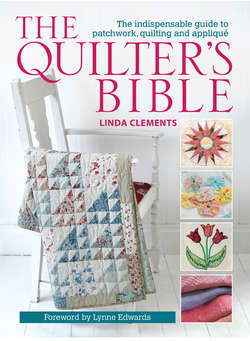Читать книгу The Quilter's Bible - Linda - Страница 63
На сайте Литреса книга снята с продажи.
ОглавлениеWorking with Blocks
Most blocks are designed on geometric principles so a great many can be categorized as types (although even these categories have subdivisions!). There are thousands of block names, and many have more than one name, but the good news is that you don’t have to know the names of any of them to create wonderful patchwork. There are more than 100 blocks illustrated in this book – plenty to experiment with!
Blocks made from small units, such as the equilateral triangles used here, allow plenty of scope for playing with fabrics.
Some block names describe a shape the block may represent, such as Eight-Point Star, Spider Web and Streak o’ Lightning. Some are named after the pattern they represent, such as Pine Tree, Bow Tie and Pinwheel. Others are named after historical and religious subjects, such as Lincoln’s Platform, Clay’s Choice and Walls of Jericho. Some names are just fanciful, their origins lost in the past, such as Toad in a Puddle, Corn and Beans and Dove in the Window. When American magazines started publishing patchwork patterns from the 1830s onwards there was an explosion in new block designs and names. To make things easier, blocks are usually categorized into various types – see Block Types.
This book shows how to make many blocks, beginning with simple shapes, such as squares, rectangles and triangles, and moving on to more complex shapes, including diamonds, trapeziums and polygons. By working through the book you can increase your knowledge and skills and tackle all sorts of block.
Bright Idea
If you are creating a quilt or other project composed of various blocks and can’t decide which arrangement would work best, arrange the blocks on the floor or bed and use a digital camera or mobile phone to take a picture. Change the layout around and take another picture. Do this as often as necessary. You can then scroll through the pictures to decide which one you like best.
Just two blocks were used in this quilt by Pam and Nicky Lintott made from a Jelly Roll™. The alternating setting and colour combinations create a vibrant and interesting quilt.
